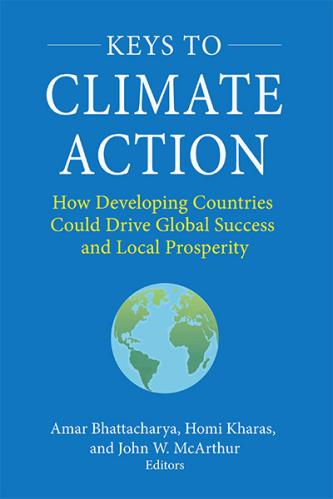In advance of President Obama’s trip to East Africa on July 23, the Africa Growth Initiative has prepared short travel companions on the economic environments in both Ethiopia and Kenya. The president’s visit to Ethiopia, a rapidly growing economy and the seat of the African Union, underpins the United States’ commitment not only to trade and investment with sub-Saharan Africa, but also its willingness to engage the continent as a whole. Below are key facts on Ethiopia’s economy to consider as President Obama travels to the region. Facts on Kenya can be found here.
Ethiopia is the fifth-fastest growing economy of the 188 International Monetary Fund member countries. The Ethiopian economy has enjoyed strong economic growth with average GDP growth over 10 percent in the past decade, compared to a 5.4 percent average throughout sub-Saharan Africa. This growth has been largely a result of government-led development policies with an emphasis on public investment, commercialization of agriculture, and non-farm private sector development.
Ethiopia is on its way to become a “climate resilient” economy by 2025: Ethiopia has the second-highest hydropower generating capacity in Africa, after the Democratic Republic of the Congo, and the continent’s biggest windfarm. Despite limited hydrocarbon resources compared to neighboring oil-rich nations, Ethiopia exports power to parts of Kenya, Djibouti, and Sudan.
Ethiopia is at the focal point of emerging economies’ interest with various delegations of foreign investors from other emerging economies seeking investment opportunities in the country. A recent Brookings report documents highlights the role played by Chinese investments in Ethiopia’s infrastructure financing. Similarly, India is the biggest investor in land in Ethiopia, with Indian companies accounting for almost 70 percent of the land acquired by foreigners.
Ethiopia has made progress towards reaching most of the Millennium Development Goals. Together with strong government action and the largest social protection scheme in the region, Ethiopia has seen remarkable progress towards its development targets. Apart from the overall decline in poverty (reduced by 33 percent since 2000), positive gains have been made in terms of education, health and reducing the prevalence of HIV and AIDS.
Ethiopia has prioritized infrastructure development and regional integration. Ethiopia is investing heavily in physical infrastructure as part of its development strategy. This includes the development and upgrading of the country’s power, transport, and telecommunications facilities, with a brand new railway network and the construction of a number of hydroelectric power stations that will allow the country to continue to export power to neighboring countries.
Ethiopia opened the first space observatory in East Africa. The country will also launch its first satellite in the next few years to study meteorology and boost telecommunications.
Ethiopia has made significant progress in improving its economic performance in recent years thanks to the implementation of sound economic policies and financial support from the international community. The following challenges could undermine this rapid economic expansion:
Though economy continues to grow impressively, structural transformation lags. The Ethiopian economy is based on agriculture, which accounts for about 45 percent of GDP and roughly 60 percent of export earnings. Over three-quarters of the population is still employed in the sector, and efforts to pull labor into more productive sectors like manufacturing and service sectors are limited.
Ethiopia’s per capita GDP of $505 is one of the world’s lowest. Though per capita GDP is on the rise—7.2 percent in 2014—it is still the one of the poorest in the world, ranking 173 out of 187 countries on the Human Development Index. Similarly, despite Ethiopia outperforming many sub-Saharan countries in poverty reduction, widespread malnutrition continues to haunt the nation. Estimates suggest that the country loses around 16.5 percent of its GDP each year to the long-term effects of child malnutrition. Dependency on agriculture—coffee in particular—leaves the large rural population vulnerable to droughts, natural disasters, and other economic shocks. Recent periods of rapid inflationary pressures reaching a peak of over 40 percent in 2011 with food prices rising at 100 percent, and large refugee inflows from Eritrea and South Sudan (Ethiopia is Africa’s largest refugee-hosting country) further aggravate these trends.
The country still relies heavily on aid to achieve its development goals. Ethiopia receives the most USAID assistance of any sub-Saharan African country, ranked seventh worldwide. Even among other donors, Ethiopia remains the single-largest recipient of official development assistance in sub-Saharan Africa.
The state continues to maintain control of key economic sectors. With just over 2 percent internet penetration and 27 percent cellular telephone subscriptions, Ethiopia has one of the lowest rates of internet and mobile telephone penetration in the world. Persistent state interventions (including nationwide internet filtering), public sector monopoly over the telecom sector (investment in telecommunications must be in partnership with the Ethiopian government), and a relatively closed economy have suppressed the growth of economic freedom over the past five years.



Commentary
Obama’s trip to Ethiopia: Economic highlights
July 17, 2015